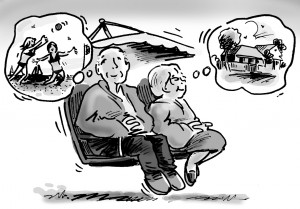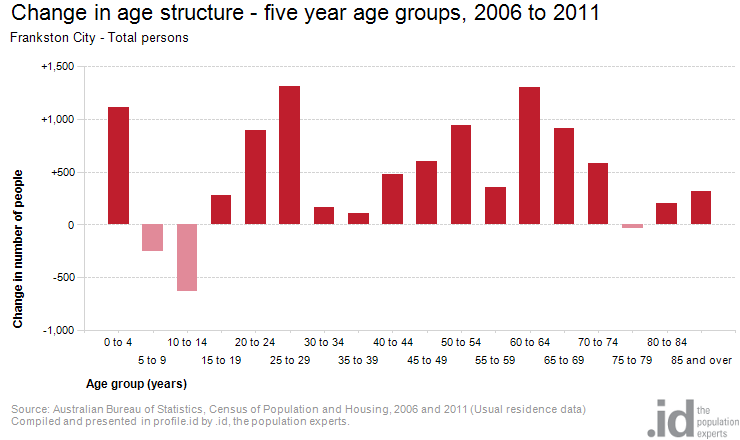People love extremes – particularly in the statistical sense. I’m often getting asked “What’s the oldest/youngest/highest income/lowest income/most educated/least educated/largest families/smallest families…place in Australia?”. .id’s profiles are fantastic at looking at the characteristics of an area against a wider benchmark, but everyone also wants to know where their area sits in the continuum of the nation.
So this is the start of a series of short articles looking at the extremes of characteristics in Australia. To start with – age!

We are an ageing society in Australia. The median age for the nation in 2011 was 37 years, up from 35 ten years before. The median is the midpoint of all ages, so that means that 50% of the population were older than that.
In 2011, the oldest places in Australia (SLA level, by median age) were:
- Bribie Island (in the City of Moreton Bay, Queensland) – 57 years
- Victor Harbor (South Australia) – 56 years
- Queenscliffe (Victoria) – 55 years
- Glamorgan/Spring Bay (Tasmania) – 53 years
Most of these places are retirement communities. While areas can gain significant elderly population through “ageing in place” – that is, people staying in the same place for much of their lives – the oldest communities are places which attract people at retirement age. They tend to have a lot of caravan parks and mobile home villages to accommodate this elderly population. They also tend to be located on the coast.
Here is the age structure for Bribie Island compared to Australia.

Here is a similar one for Victor Harbor.

As they mostly contain pensioners, these elderly places also tend to have low incomes, and are located well away from major employment centres. This often creates issues for those areas being able to fund services for the population, without a critical mass at working age.
The interesting thing for many of these ageing areas is that .id’s forecasts show them ageing in future at a rate slower than the national average. The most significant ageing will occur in other areas which are currently populated with families ageing in place, while the current elderly areas can’t gain a lot more retired population without losing services – there always needs to be some younger population to run the local service economy. So there are jobs here for younger people as well, and aged care residential services was one of the fastest growing employers in the 2006-2011 period.
Visit our demographic resource centre if you would like more information about the population characteristics of Australia. You may also wish to subscribe to our newsletter so that we can keep you updated on the latest demographic trends in Australia. For any enquiries about your demographic requirements, visit our website or drop us an email.














